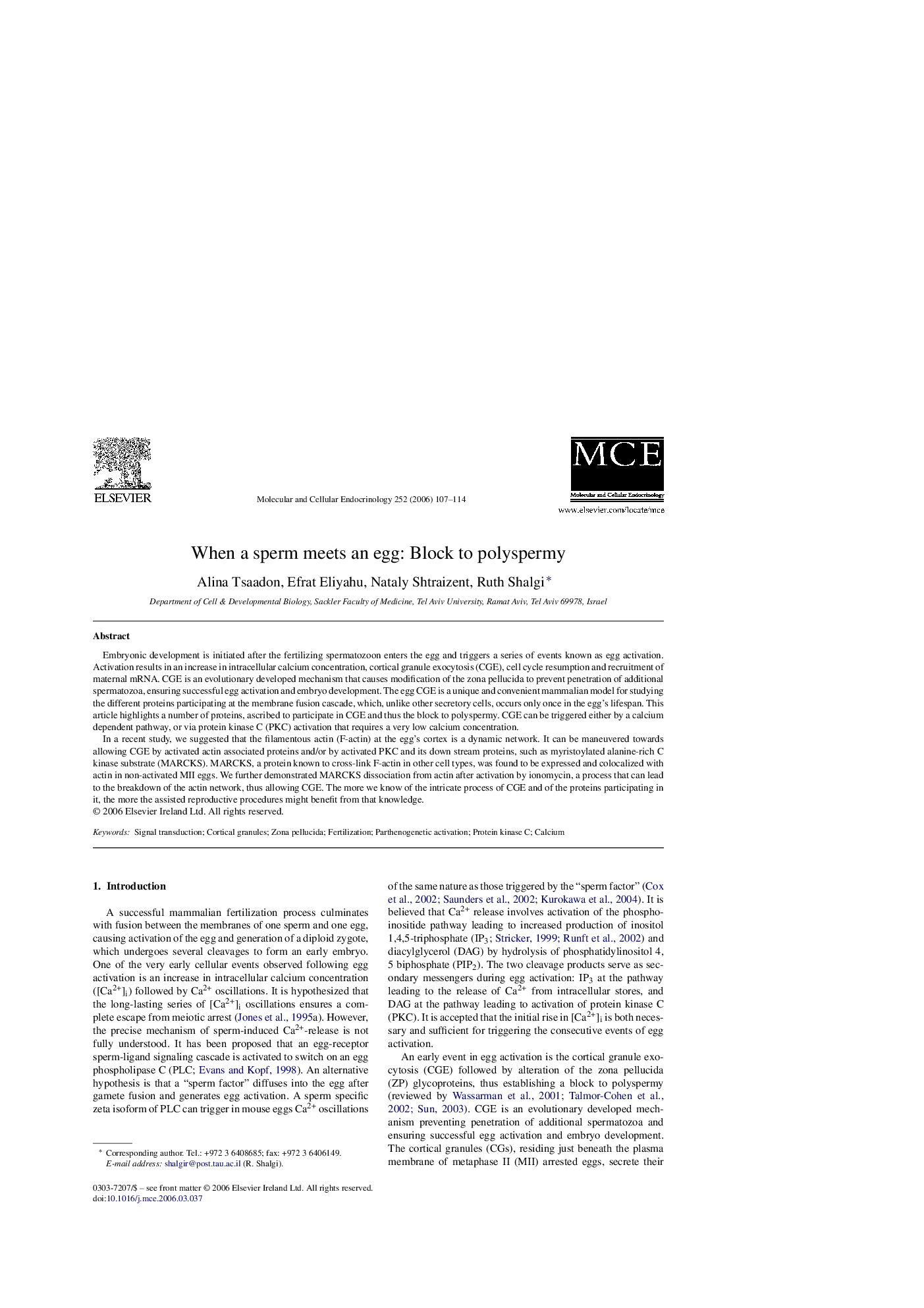| کد مقاله | کد نشریه | سال انتشار | مقاله انگلیسی | نسخه تمام متن |
|---|---|---|---|---|
| 2198211 | 1551005 | 2006 | 8 صفحه PDF | دانلود رایگان |

Embryonic development is initiated after the fertilizing spermatozoon enters the egg and triggers a series of events known as egg activation. Activation results in an increase in intracellular calcium concentration, cortical granule exocytosis (CGE), cell cycle resumption and recruitment of maternal mRNA. CGE is an evolutionary developed mechanism that causes modification of the zona pellucida to prevent penetration of additional spermatozoa, ensuring successful egg activation and embryo development. The egg CGE is a unique and convenient mammalian model for studying the different proteins participating at the membrane fusion cascade, which, unlike other secretory cells, occurs only once in the egg's lifespan. This article highlights a number of proteins, ascribed to participate in CGE and thus the block to polyspermy. CGE can be triggered either by a calcium dependent pathway, or via protein kinase C (PKC) activation that requires a very low calcium concentration.In a recent study, we suggested that the filamentous actin (F-actin) at the egg's cortex is a dynamic network. It can be maneuvered towards allowing CGE by activated actin associated proteins and/or by activated PKC and its down stream proteins, such as myristoylated alanine-rich C kinase substrate (MARCKS). MARCKS, a protein known to cross-link F-actin in other cell types, was found to be expressed and colocalized with actin in non-activated MII eggs. We further demonstrated MARCKS dissociation from actin after activation by ionomycin, a process that can lead to the breakdown of the actin network, thus allowing CGE. The more we know of the intricate process of CGE and of the proteins participating in it, the more the assisted reproductive procedures might benefit from that knowledge.
Journal: Molecular and Cellular Endocrinology - Volume 252, Issues 1–2, 27 June 2006, Pages 107–114